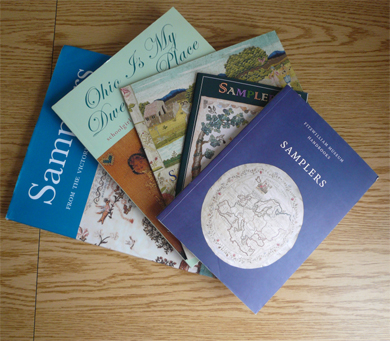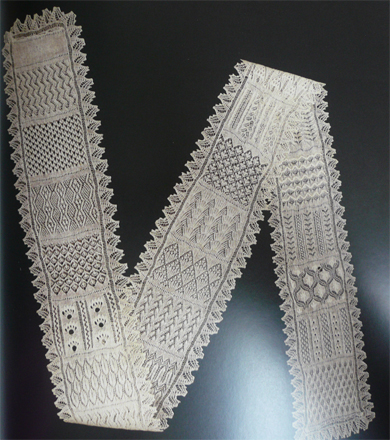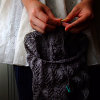 |
Recently I have started to collect sampler books for my mom and one of her friends. Above is a little collection that I have ready to send her for Valentines Day. Yes, Yes, Yes, I am really late and if I don't hurry Asian Girls Valentines day will be over as well. I am just having a hard time finding time to get to the post office. The stack of stuff I need to mail is embarrassing. :( Sorry everyone. I have been thinking a lot about needlework and samplers, it is surprising when you think about it; the story of the sampler really is far from over. In a time when virtually all textiles are mass-produced and women are employed outside the home, there has been a revival in an interest in hand goods. Just think about all the craft bloggers out there. Though it pains me to say, embroidery and decorative arts that flourished prior to the Industrial Revolution can never again be regained. We have simply lost the skills and time needed for these arts. We are certainly coming a long way to restore the craft, but unfortunately it is seen more as a craft than fine art. Though there is a small group that is working on the "Heritage Industry" today, who keep at least some of the historical concepts alive. So what engrossed us in studding about samplers? Historically, samplers were the start of a lifetime of work. The word sampler was derived from the Latin - 'exemplum' which had a meaning of self-explanatory. So the meaning of sampler was the act of learning and recording of stitches. This is the aspect that really intrigues both my mother and me. Young children did a lot of the earliest samplers both English and Continental. The motifs that were popular were those of the areas of the world that you lived. For example; Crucifixion and Instruments of Passion are common in Catholic Europe, Orange Trees were popular in German and Danish borders, English samplers have heavy bands and repeat borders. I am far from an expert, but I have been reading a lot on the subject as of late. Especially in regards to knitted samplers and lace samplers. Knitted samplers were very practical items. They held an immediate practical
application for the knitter. They could be used as stockings, caps, gloves,
and other accessories need to keep one warm in the winter. Then when young
girls perfected their lace knitting, they could knit the band designs
into the ankles of their stockings so that it would be slightly visible
under their hemlines. You know how a racy ankle meant more than fully
exposed chest during the early 1800's. |
 |
Samplers from A to Z by Pamela A. Parmal |
Wednesday, March 07, 2007
kitty: Samplers
Subscribe to:
Post Comments (Atom)







thanks for posting these, kitty kitty ~ i hadn't thought before about the age of the women making these samplers. it makes them even more awe-inspiring and just goes to show how age really doesn't matter, kids are as true artists as anyone.
ReplyDelete;)
You are right that once the skills are lost they can not be regained. People do not want to take the time to learn them properly. The majority of people today want to do things the easiest and fastest way. I am always thankful that I learned. I think I need to get some new lamps and do more embroidery. Try knitting by candlelight one night. YOu can do it with 2 taper candles.
ReplyDeleteHi Mia..
ReplyDeleteActually when I use to work in the labs at OSU we only had 2 candlelight bulbs to work buy and only a couple of 2 candlelight bulbs in the racks of the collection to see by. So I have done a lot of embroidery in my light by 2 candlelights. :) It isn't easy though the eyes do adjust to it.
I have also watched historical fibers decay when exposed to 3 candlelights under and electron microscope so I do see the rational.
Kitty kitty
Very Nice Blog!
ReplyDeleteRegards,
Mae.